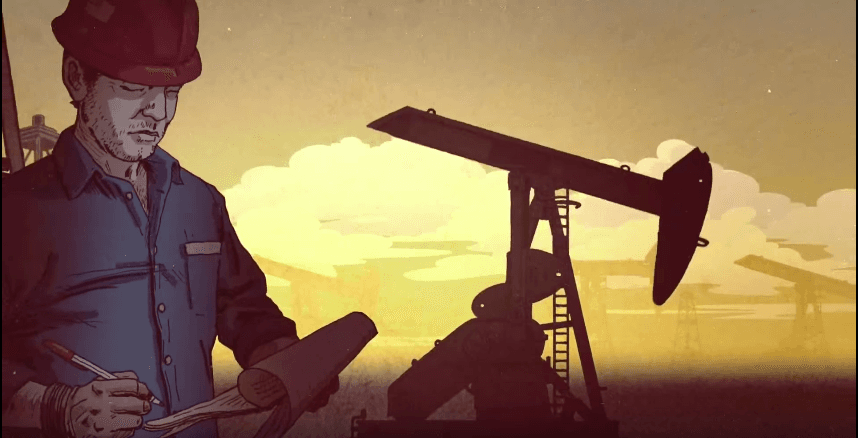Are we causing earthquakes in Oklahoma?
The oil and gas industry is behind many of America's jobs. But the process of drilling is also linked to an increase in man-made earthquakes, especially in Oklahoma.
Scientists have known for a long time that humans can cause earthquakes, especially when we mess around with underground faults. The most dramatic example of this now can be found in the American Midwest.
This story was originally published and produced by Reveal from The Center for Investigative Reporting.
Oklahoma has always had earthquakes, but they used to be rather rare — about one or two a year that people could feel. That started to change around 2009. And by 2014, things really went crazy.
The seismological community is pretty unified in concluding that the big increase in earthquakes in Oklahoma comes from injecting wastewater brought up by oil and gas exploration back into the earth. Read more about the link between wastewater disposal wells and earthquakes here.
Oklahoma has about 3,200 wastewater disposal wells. The vast majority aren’t likely to cause problems with earthquakes. The problems start when wells are used to dispose of wastewater near pre-existing fault lines.
When wastewater disposal wells are drilled deep enough, they may come into contact with a layer of granite rock called “the basement.” That basement rock is where the faults are. So if water is injected in the wrong place, it changes the pressure on the fault. Some of these faults have been dormant for millions of years until the injection triggers them.
Lots of other places in the world have wastewater disposal wells – basically anywhere with oil and gas exploration. And not all of them have problems with earthquakes. For instance, North Dakota’s Bakken oil fields don’t have as much of an earthquake risk because, as far as we know, there aren’t any faults there that are likely to cause problems.
Other oil-producing states aren’t so lucky. The US Geological Survey has identified areas in eight states as having measurable levels of induced seismicity. (Translation: man-made earthquakes.) Those include parts of Texas, Colorado, Utah, New Mexico, Arkansas, Alabama, Ohio and, of course, Oklahoma.
And there are plenty of wastewater disposal wells in another state known for earthquakes, California.
But even though most induced-seismicity earthquakes are blamed on wastewater disposal, there are other ways we can trigger earthquakes.
Hydraulic fracturing, or fracking, has been linked to earthquakes, too. But so far, those quakes have been smaller and much shallower, making them less dangerous than disposal-induced quakes.
Large-scale geothermal power plants also can be a trigger for earthquakes, notably at The Geysers in the California wine country.
And underground nuclear tests produce measurable seismic waves. In fact, much of what we know about the size and success (or failure) of North Korea’s nuclear tests comes from seismologists’ analysis of the small earthquakes the blasts triggered.
Man-made earthquakes are a well-documented phenomenon, and what’s happening in Oklahoma is only the most extreme example to date. It’s true that most of the earthquakes in Oklahoma have been small, but earthquakes are like a lottery you don’t want to win. For every 10 earthquakes of magnitude 3.0, there’s one 4.0. And if you have enough 4’s, you’ll eventually have a 5.
And what does a 5 look like? A magnitude 5.7 quake in Oklahoma in 2011 destroyed houses, toppled brick towers at a university and caused injuries. The quake luckily was centered in a mostly rural area. But seismologists caution that this doesn’t mean a larger quake couldn’t happen in dense urban areas, too.
Even if all wastewater disposal stopped tomorrow, it’s not clear what would happen next. Would the quakes stop right away or over a period of years? Or have we let a genie out of the bottle that’s hard to put back?
oembed://https%3A//www.youtube.com/watch%3Fv%3DAIu3b0WhMgs
This story was produced and originally published by Reveal from The Center for Investigative Reporting, a nonprofit news organization and public radio show based in the San Francisco Bay Area. Learn more at revealnews.org. Ariane Wu can be reached at awu@cironline.org, and Michael Corey can be reached at mcorey@cironline.org.
Related stories:
Listen to what the frequency of flooding will sound like in these American cities.
Earthquakes don't just destroy, they offer opportunities for new life.
